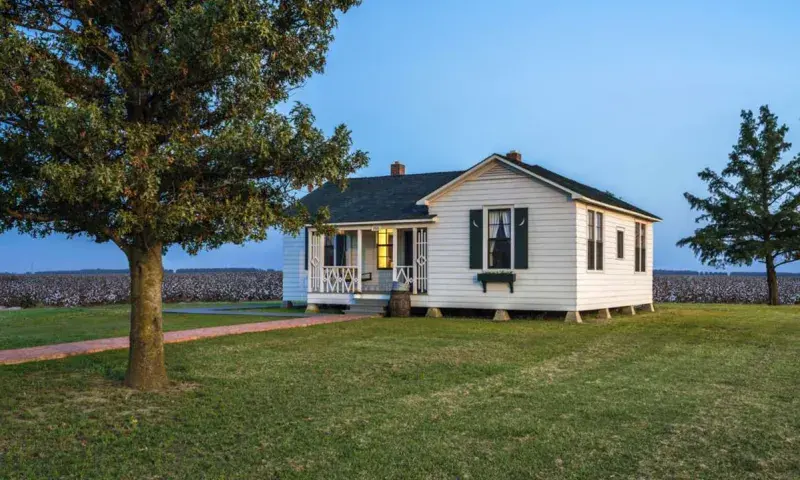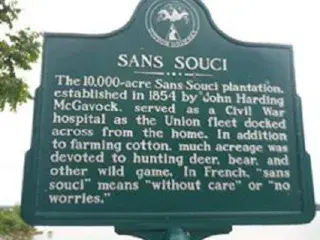Dyess
In May 1934, “Colonization Project No. 1” was established in southwestern Mississippi County as a New Deal agricultural resettlement colony to give destitute farmers a chance for a new start in life. It was named for W. R. Dyess, Arkansas' first Works Progress Administration head, who suggested the idea to the Roosevelt Administration but died in a plane crash before the project was fully implemented.
The colony was laid out in a wagon-wheel design, with a community center at the hub and farms stretching out from the middle. Five hundred farmsteads were created, each with at least 20 acres, a three- to five-room farmhouse, and an adjacent barn, smokehouse, privy, and chicken coop. Qualifying farm families were selected and relocated from every county in Arkansas.
One such family was led by Ray and Carrie Cash, who left Kingsland in Cleveland County, Arkansas, in 1935 with their five children. Young J.R., who would eventually become known worldwide as Johnny, was only three years old when the family arrived in Dyess. Two additional children were born after their arrival. Cash would later say that many of his early songs, such as “Five Feet High and Rising” and “Pickin’ Time,” were inspired by his time in Dyess. He left the community to join the Air Force after graduating from Dyess High School in 1950.


Today, Dyess remains a farming community, though it has dwindled to a population of just over 400 people, and all but a handful of the original colony houses are gone. The Cash home remains, however, and Arkansas State University purchased it in 2011 and began restoring it as it would have looked the day the Cash family moved in.
Historic Dyess Colony: Johnny Cash Boyhood Home opened to the public in August 2014 and now includes restored buildings in the Colony Circle, as well as the Cash home. The Dyess Colony Visitors Center is located at the site of the former Theatre and Pop Shop and includes a gift shop, short video, and exhibits. The Dyess Colony Administration Building, includes exhibits about the development of the colony and the impact of Dyess on Johnny Cash and his music. The Cash home is furnished as it was when the Cash family lived there.
There also is a driving tour that provides images and information at the former locations of colony buildings, including the school, hospital, cannery, cotton gin, cooperative store, café and shops building, community building, and other sites.









